How to Make Schmaltz
(and What To Do With It Afterwards)
Nothing says Jewish home cooking more than schmaltz and its scrumptious by-product, gribenes. (Disclaimer: There isn't a line in the U'netaneh Tokef, "Who by rendered chicken fat," but this stuff is seriously bad for you. How have we survived this long?) Making it is not difficult—actually kinda fun—and it adds immeasurably to the richness of the recipes in which it's used.
Start with a pile of raw chicken fat. Yum!
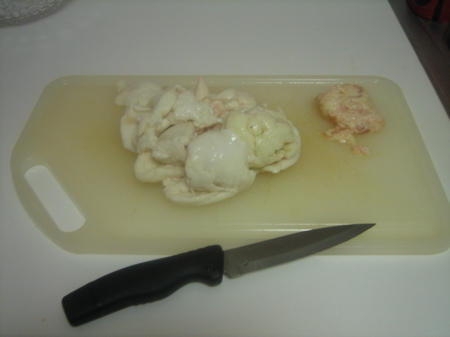
I use two kinds. The larger pile is a half-pound from the butcher. Nice ones give it to you for free, but this year I went to a place that charged $5.96/lb. for, basically, their trash. Grr. The smaller pile is the result of my best effort at trimming the chicken I used for my matzo ball soup. There never is much fat on the chickens you buy in stores these days, so you pretty much have to seek outside help. (My grandmother z"l cooked chicken frequently enough that whenever it came time for her to make schmaltz, she had her fat supply at the ready in the form of a large baggy containing the accumulated trimmings from many chicken dinners past.)
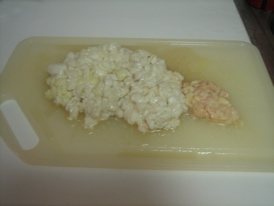
Chop the chicken fat into small pieces.
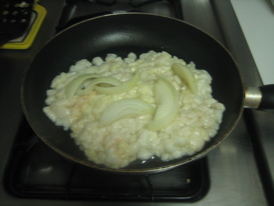
Throw in a frying pan with slices of onion on top.
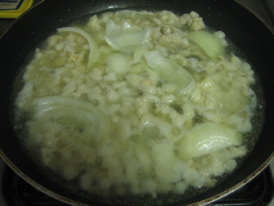
Cook over low heat. Almost immediately the fat begins to melt. Fun!
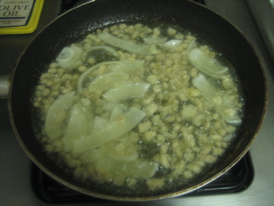
Keep stirring as it continues to melt over the next 20+ minutes.
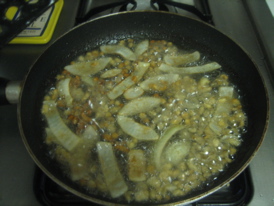
Eventually the fat begins to brown.
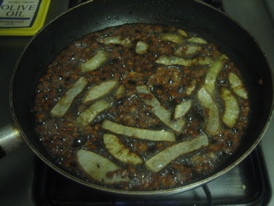
You're done when the fat is golden-brown and no white fat is left.
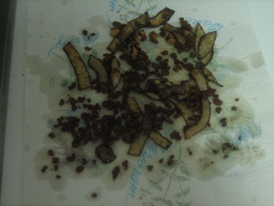
Use a slotted spoon to remove the crispy gribenes. (If you follow my family's tradition, you must then hide the gribenes from the children. They are too young to eat it!)
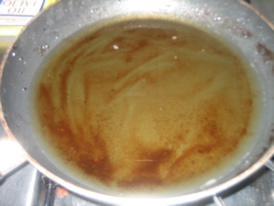
What's left in your pan is the precious schmaltz!
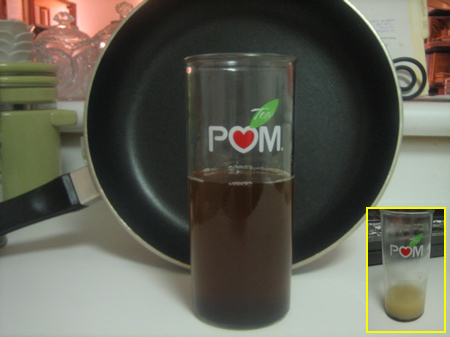
Here is the finished schmaltz. Technically you are supposed to strain it so it is clear and golden (like the schmaltz in the inset, which is opaque because it was chilled), but I never bother. (Please note: The logo on the glass implies no endorsement of this product by Pom Wonderful, the Antioxidant Superpower that helps you Cheat Death.)
So—now that you have produced the sacred elixir of Jewish continuity, what do you do with it? The truth is, there isn't an authentic Ashkenazi recipe that doesn't call for schmaltz, but, like, are you really going to serve your family homemade kishka (stuffed cow's intestines) or p'tcha (jellied calves' feet)? Below are a few more mainstream ideas.
The first is my grandmother's salt & pepper kugel. I've never seen a recipe quite like it anywhere else—it's delicious and unique.
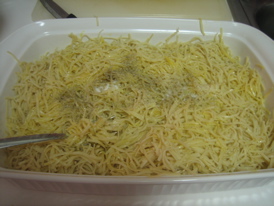
Boil, drain, and cool a pound of fine noodles. Stir in six egg yolks and salt & pepper to taste—be generous!
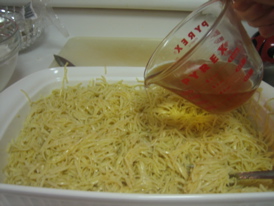
Add a half-cup of the sacred schmaltz.
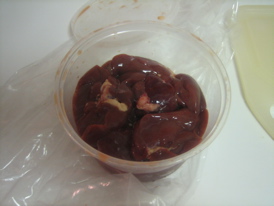
Take a couple raw chicken livers. Broil first to kasher. Or, save time by buying already-kashered livers.
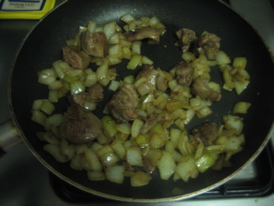
Sautee with an onion.

Chop the liver and onions. Add to the noodle mixture.
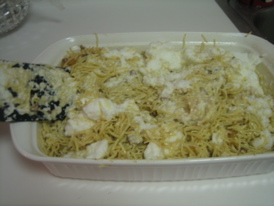
Finally, fold in six egg whites (beaten).

Here is the kugel ready to go into the oven.
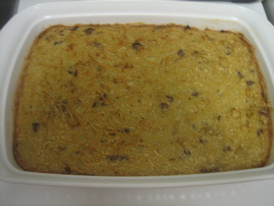
And here it is after an hour at 350 degrees. The noodles at the top should be crispy, and the edges of the kugel should be nice and brown. (Various members of my family, myself included, prefer it with the edges burnt.)
A couple other easy ways to have fun with schmaltz:
- Make chopped liver—the perfect way to get rid of the rest of your chicken livers and even some gribenes!
- Use as the fat in your matzo balls! I have never done this (my grandmother taught me with vegetable oil), but this way is more authentic.
Schmaltz is grandma's way of saying, "I miss you. Come visit." Shana tovah, and don't overindulge unless you are anxious to visit her in the hereafter!